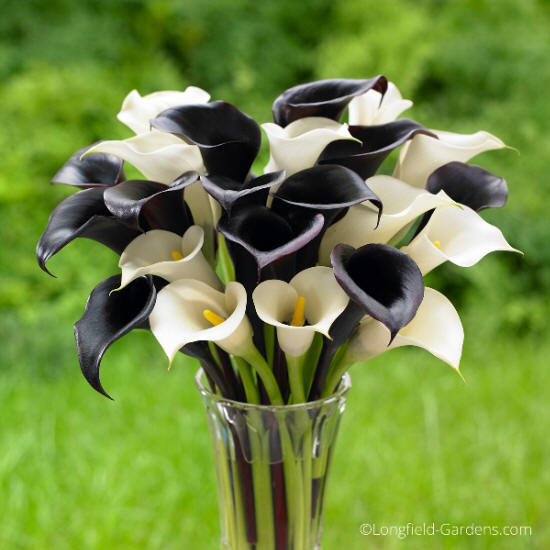|
 Extend
the Garden Season with Spring Planted Bulbs Extend
the Garden Season with Spring Planted Bulbs
By Melinda Myers
 Send a link to a friend
Send a link to a friend
[April 20, 2016]
LINCOLN
- Keeping your garden looking its best throughout the growing season
and into fall is possible with the help of low maintenance spring
planted bulbs. Plant them in spring among other annuals or
perennials and watch as these bulbs brighten the garden, adding new
life to your late season gardens. |
|
 Whether your gardens and containers are in full sun or shade
you’ll enjoy the attractive foliage and pop of color that dahlias,
cannas, calla lilies, caladiums and elephant ears will add to the
landscape. Whether your gardens and containers are in full sun or shade
you’ll enjoy the attractive foliage and pop of color that dahlias,
cannas, calla lilies, caladiums and elephant ears will add to the
landscape.
These easy care plants reward you with loads of beauty. Just plant,
water and enjoy. Quality online retailers like Longfield Gardens (longfield-gardens.com)
offer the greatest variety of color, shapes and sizes as well as
planting and care instructions.
Grow dahlias in sunny areas with at least six hours of sunlight for
the best floral display. Simply plant the tuberous roots four to six
inches deep with the stem facing up after the danger of frost has
passed.
Use dahlias in a cutting garden or as an attractive screen along
fences and property lines. Use the shorter more compact border
dahlias, like ‘Gallery Pablo’ in containers on your patio, balcony
or deck where you and the hummingbirds will enjoy their blooms.
 Wait until the danger of frost has passed to plant cannas in a full
sun to partially shaded locations. Plant the canna rhizomes
horizontally two to three inches deep with the growing point facing
up. Take advantage of their bold foliage and use cannas as a
backdrop in the flower border or screen in the landscape. Use as a
vertical accent in a large container or select dwarf varieties for
smaller pots.
Calla lilies are another spring planted bulb that thrives in full
sun or part shade. The speckled foliage adds color to the garden all
season long. Include these one- to two- feet-tall plants in the
front or middle of the flower garden or as a vertical accent or
filler in a pot. And don’t forget to cut a few flowers to enjoy
indoors. The black flowers of ‘Night Cap’ teamed with the white
blooms of ‘Crystal Clear’ create an elegant display.
Like the other bulbs, wait for the danger of frost to pass before
planting them outdoors. Plant the knobby rhizomes two to four inches
deep with the growing point facing up. [to top of second
column] |

Add some color and plenty of wow factor to shaded areas with the foliage of
caladiums and elephant ears. These tropical beauties thrive when soil and air
temperatures are warm. Wait for the danger of frost to pass and the soil to
warm, 65 to 70 degrees, before planting them in the garden.
Use caladiums to brighten containers, dress up window boxes or edge a shady
pathway. The colorful leaves stand out amongst the greens of shade gardens. Team
variegated varieties with complimentary colored begonias, coleus or impatiens.
Include elephant ears in the garden or containers. Their large heart shaped
leaves give a tropical feel to the patio, deck or pool area. Consider planting
one, two or more to create an impressive welcome for guests or a bold statement
in the landscape. They pair nicely with caladiums, coleus and other shade loving
plants.
Make this the best season yet with the help of spring flowering bulbs. You’ll
enjoy the variety and late season color these easy care plants provide.
[Melinda Myers, photography by
Longfield Gardens]
Melinda Myers has over 30 years of gardening experience and has
written over 20 gardening books, including Small Space Gardening.
She hosts The Great Courses “How to Grow Anything: Food Gardening
For Everyone” DVD set and the nationally syndicated Melinda’s Garden
Moment TV & radio program. Myers is a columnist and contributing
editor for Birds & Blooms magazine and was commissioned by Longfield
Gardens for her expertise to write this article.
 |